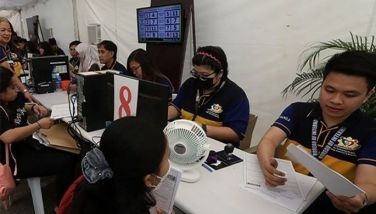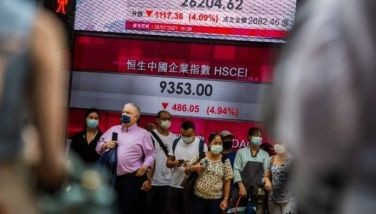Time to get moving

After two years of not taking a plane or a break, I recently decided to join my family and fly to San Francisco. I have been told that the situation is quite different there.
My family and I took an ANA flight and underwent the required antigen test 24 hours before departure. We all tested negative.
Terminal 3 was quiet and so empty that we were at the boarding gate in no time. The flight was only 30 to 40 percent full, so we used our points to get upgraded to First Class - something that would never happen pre-pandemic because ANA flights are usually full.
We landed in Narita for a stopover and to change planes, and even at this airport, it was uncharacteristically quiet. Japan remains closed to tourists and we were the only guests at the lounge. Masks were being worn, something not unusual for the Japanese who, even before the pandemic, were already into the practice of wearing masks when they are feeling unwell.
We arrived at the San Francisco airport and it was also quiet. This is one of the busiest airports in the country and clearing immigration would normally take a long time, but today we were done in five minutes.
My first stop was the tech store to get my SIM and as I entered, everyone was wearing a mask. At the supermarket, it was the same thing: people were wearing masks. Life seemed normal and people were moving freely and stores were open.
I have not been to a mall since the beginning of the pandemic, so the impression I got when I visited such a place is that it seems people have already accepted the fact that COVID is here to stay. I think about the Philippines and consider that, maybe, it is time we also accept that reality or else the Philippine economy will suffer, and along with it, MSMEs.
Recently, I learned that the Philippines didn’t make it to CNN’s list of countries that are welcoming US tourists right now. Going through the reasons our country was omitted, the most probable reason might be, and I am quoting directly here, is that it has “entry requirements so extensive and complicated that they put the country out of reach of almost all US citizens.”
Sadly, this is quite true. The Philippines has rather complicated rules for arriving passengers from countries other than the 32 it included in a Green list. The rules are different depending on point of origin and vaccination status. Except for fully vaccinated travelers coming from the 32 countries in the Green list, all arriving passengers must test negative from an RT-PCR taken 48 hours before departure. They get swabbed again after having spent at least five days in facility-based quarantine.
Meanwhile, if you are traveling to the US, all you need is a negative anti-viral test (it doesn’t have to be RT-PCR) taken no more than 24 hours before departure. In fact, rapid tests are acceptable as long as they meet the requirements of the CDC. This remains true even following the emergence of the Omicron variant. No facility-based quarantines are required when you arrive in the US.
Instead, when it comes to air travel, the focus is on testing, and testing fast and accurately. The goal is to find out if a passenger is infected, and if not, to send him on his way as fast as possible and not create bottlenecks.
So why can’t the Philippines require only an antigen test 24 hours prior to departure? Testing closer to the time of departure using an antigen test is doable and will be more efficient in identifying positive cases rather than waiting for an RT-PCR test result to arrive within 24 hours. And just for good measure, why not also test the fully vaccinated before departure, and then test again upon arrival?
I also believe home quarantine can take the place of facility quarantine. Most countries already have the Delta and Omicron variants, so why are we even pretending that it’s not the case? If you think that it’s silly to require facility quarantine for visitors coming from Manila once they arrive in Boracay, then I think you see the point here.
We’ve seen how major events changed our lives. The 9/11 attacks, for example, had us removing our shoes through security inspection. Its consequence on a larger economic scale was the consolidation of the eight US major airline carriers to four.
How airlines will fare in the pandemic, and if they will survive it, will depend on government policy and how well it balances public health and the economy. This is also quite true of other industries that are downstream from air travel, not the least of which are the tourism, hotel, and restaurant sectors. Many MSMEs also depend on the trickle-down business generated by air travel.
It is quite understandable that public health should be the primary concern of governments. But as COVID itself changes, policy should also be open to re-examination. Our OFWs can’t afford to spend their hard-earned money and precious time in a quarantine facility. Our economy can’t take any more lockdowns as our country’s debts continue to mount. Time is not on our side.
It’s time we move. It’s time we start living with COVID. We have already started taking the necessary steps by vaccinating and boosting the population. We have moved from prevention to treatment, thanks to efforts to make accessible anti-viral medicines like Molnupiravir, which, from my own personal experience, seems to work.
But these are baby steps. We need to take that leap of faith. While vaccines are the solution to keeping a healthy nation, learning to live with COVID will revive our economy and bring life back to our MSMEs.
Economic paralysis should not be the legacy of COVID-19. If everybody remains too cautious, we will all be jogging in place, going nowhere. Literally.
- Latest
- Trending





























